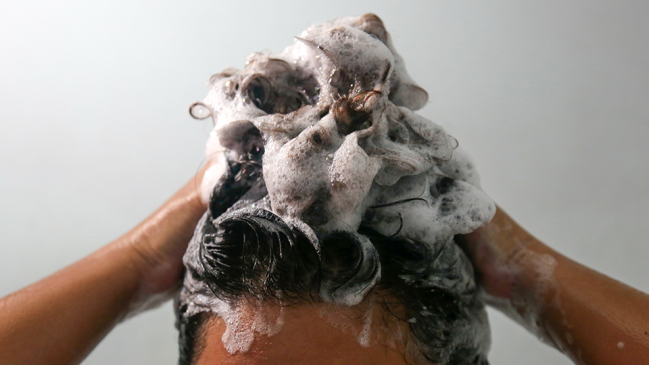Sun-damaged skin? You’re not alone. Even the most committed sunscreen users can miss a spot—like the ears or the tops of the feet—or forget to reapply. It’s more common than you’d think: 67% of Americans reported some level of sun damage last year, and over 33,000 ended up in the ER with severe burns. But sunburn is only part of the story. Sun-damaged skin can lead to lingering spots, dryness, and premature aging. The good news? With the right support, your skin can recover. Don’t wait until fall—taking action now helps.
Scientists estimate that between 80% and 90% of visible aging comes from exposure to the sun’s ultraviolet rays, both the UVA and UVB kinds. And most people underestimate their level of sun exposure.
Although 10 to 30 minutes of sun exposure each day can improve vitamin D levels, help boost mental health, and the immune system, more than that it can start to damage the skin, even if that’s just through the car, office, or kitchen window.
“If your indoor plants are thriving by the window, that same light is hitting your skin too,” explains Mahoney. “Unlike plants, however, our skin doesn’t flourish from it. In fact, repeated exposure without proper protection can lead to sun damage, pigmentation, and premature aging. Even with sunscreen, most people forget to reapply every two hours (or more often during physical activity or water-based activities), allowing UV rays to do more harm than they realize.”
Summer sun, heat, sweat, and dehydration can all affect your skin cells, causing different kinds of damage, including:
Mahoney explains that she sees a lot more of these concerns as summer goes on and blends into autumn:
While many of these concerns are cosmetic and can be repaired with improved sun protection habits, a smart summer skincare routine, good nutrition, hydration, and rest, some types of sun-damaged skin require prompt medical attention because they could become skin cancer.
“Cosmetic sun damage includes changes like dullness, brown spots, and fine lines—mostly surface-level and related to aging. These don’t pose a health risk but can be treated for appearance,” explains Mahoney. “In contrast, medical sun damage may involve spots that change in size, shape, or color, sores that don’t heal, or rough patches that persist. These signs could indicate skin cancer and should be checked by a professional. The key difference: cosmetic damage affects how your skin looks, while medical damage can affect your health.”
Skin damage from sun exposure accumulates over days, months, and years. And the more sun damage you’ve experienced, especially during your younger years, the higher your risk of skin cancer becomes. This is why it’s so important to a.) know what to look for and b.) schedule a same-day SPOT check for any spot that looks suspicious.
“One key tool for catching potentially cancerous spots early is the ABCDE rule for monitoring moles,” explains Mahoney:
While the ABCDEs are a great guide for catching cancerous spots early, you should immediately schedule an appointment for a SPOT check on any skin lesion or spot that appears suddenly or changes in any way:
Once again, early detection and treatment for skin cancer can save your life. Although one in every five Americans will develop skin cancer by age 70, and 2 people die from skin cancer each hour, early detection and treatment give patients a very high rate of recovery and survival: 99% after the first 5 years, in fact. So don’t hesitate or wonder: just schedule a quick, same-day SPOT check with Apex Skin and get that peace of mind and/or treatment for any spot that seems suspicious.
Since everybody out there probably has some level of sun-damaged skin, it’s a good idea to add both recovery and future sun-damage prevention into your daily skincare routine. And the operational concept here really is “routine”. Skin damage from sun exposure didn’t just happen in one day, so achieving visible improvements in your skin may take a few weeks. Just keep going—consistency is the key. At home, you can start with this four-pronged skincare plan:
“Medical-grade skincare with ingredients like vitamin C, retinol, and niacinamide can help brighten, smooth, and repair the skin over time,” says Mahoney. And if you have sensitive skin or aren’t sure what products would work best for you, schedule an appointment with your dermatology provider at Apex Skin for a personalized consultation. “We can help you find the right combination of products for your skin type.”
While it’s true that ramping up your home skincare regimen to repair and prevent sun damage might take a few weeks, combining your routine with professional-grade, in-office treatments can accelerate healing and target deeper sun damage to prevent it from worsening. So, if you’re wondering how to remove sun spots, targeted, medical-grade dermatology treatments can speed the process.
If you are curious about how to fix sun-damaged skin with professional dermatology treatments, these are some of the most beneficial, depending on your specific concerns:
Professional chemical peels can gently exfoliate sun-damaged outer layers of skin, improving the skin tone, texture, and luminosity. This is a good choice for smoothing out uneven pigmentation and brightening up dull skin. “Chemical peels often lead to smoother, brighter skin within a week or two as damaged outer layers shed,” says Mahoney.
Apex uses a few different dermatology laser treatments that can break down sun spots and reduce redness while stimulating collagen production that smooths and firms the skin. Laser skin resurfacing is a good option for moderate to advanced signs of sun damage, explains Mahoney:
“Laser treatments, such as IPL or Fraxel, can target pigmentation and deeper damage, with visible changes often emerging after a few sessions, though full results typically develop over several months as collagen builds and skin regenerates. Patience is key, but many find these treatments significantly refresh sun-damaged skin when combined with proper sun protection.”
“Microneedling stimulates collagen, so results like firmer skin and reduced fine lines usually appear over several weeks to a few months as the skin heals and renews,” says Mahoney. It works by encouraging the skin’s natural repair process, helping to improve texture, tone, and the appearance of fine lines over time.
The Diamond Glow medical-grade facial is a fantastic way to refresh the skin and help repair and remove sun damage. During the process, we deeply cleanse, exfoliate, and hydrate the skin, replenishing moisture stolen by summer’s heat and sun exposure. This rejuvenates dull, tired-looking skin and restores radiance.
Our dermatology team can also prescribe stronger topical medications or skincare serums with tretinoin, hydroquinone, and antioxidants to target discoloration and accelerate skin cell turnover. These are only available by prescription.
If it seems like we’re repeating this, we are—because it’s so very important: if you have a suspicious spot that has recently appeared or an older spot that is changing in any way, schedule a same-day SPOT check with your nearest Apex Skin location now. We can do quick, in-office biopsies and excisions. This is a crucial step in early skin cancer detection and prevention. It could save your life! Contact us now.
A strategic, gentle, layered, and timed approach works best for repairing sun-damaged skin, especially with sensitive skin. Also, some dermatology treatments, while healing prior sun damage, can make your skin more sensitive to additional UV exposure. So, as summer advances into fall, this is a good time to consider scheduling and taking a strategic, seasonal approach when thinking about how to fix sun-damaged skin:
Of course, every day of the year is the best day to work on protecting your skin from further sun damage. And yes, that includes the dead of winter, when you’re spending most of your time indoors. Remember, sunlight through windows, clouds, and fog can still expose your skin to damaging UV rays. These easy prevention habits can protect your skin and keep it looking fresh, smooth, and radiant all year:
“If you’re outdoors for extended periods, seek shade whenever possible, especially during peak sun hours (10 a.m. to 4 p.m.),” she adds. “Reapplying sunscreen every two hours, or after sweating or swimming, is also crucial. Lastly, adopting these habits year-round—not just in summer—can significantly reduce the risk of premature aging, sunspots, and skin cancer over time.”
Almost everyone has some level of sun damage to their skin, but there is also a lot of hope!
“If you’re feeling discouraged about the visible effects of sun damage, know that you’re not alone, and it’s never too late to take action,” Mahoney advises. “While some damage may have already occurred, the good news is that we can absolutely slow down further harm with consistent, proper sun protection. On top of that, there are effective treatments available to help improve the appearance of sun-related changes like dark spots, fine lines, and uneven texture. Think of it as a two-part approach: protect your skin going forward, and treat what’s already there. Your skin can still respond and improve with the right care.”










